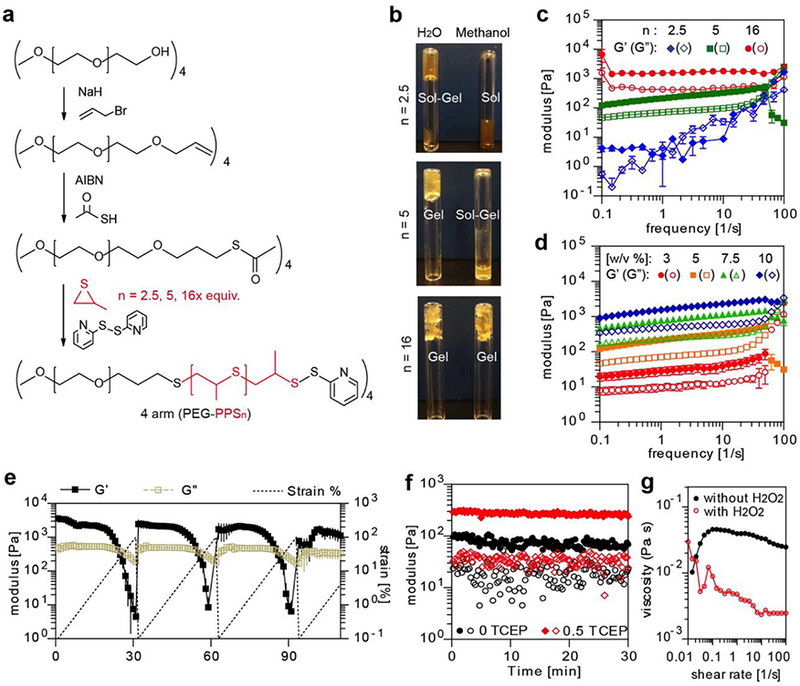Figure 1.

The viscoelasticity of the star-PEG-PPS famility in different solvents, concentrations, reduction, and oxidation environments. a. Synthesis route of 4-arm star-PEG113-PPS5. b. When resuspended in water at 10 w/v%, star-PEG-PPS2.5 exhibited sol-gel transition, star-PEG-PPS5 was fully hydrated, and star-PEG-PPS16 was partially hydrated with pockets of water not absorbed. When resuspended in methanol, star-PEG-PPS2.5 flowed under gravity, star-PEG-PPS5 exhibited sol-gel transitioning, and star-PEG-PPS16 was hydrated as hydrogel. c. The rhelogical property of 10 w/v % star-PEG-PPS2.5 (in water), star-PEG-PPS5 (in water) and star-PEG-PPS16 (in methanol). d. The rheological moduli of star-PEG-PPS5 hydrogels of different concentration under 1% strain. e. The yielding and healing behaviors of 10 w/v% star-PEG-PPS5 in aqueous environment. f. Reducing agent TCEP increased the stiffness of star-PEG-PPS5 hydrogel (n(Polymer arm) : n(TCEP) = 1 : 0.5). Polymers were at 4.75 w/v%, and measured under 1% strain. g. Hydrogen peroxide (5 v/v%) decreases the viscosity of star-PEG-PPS5 (3 w/v%).
